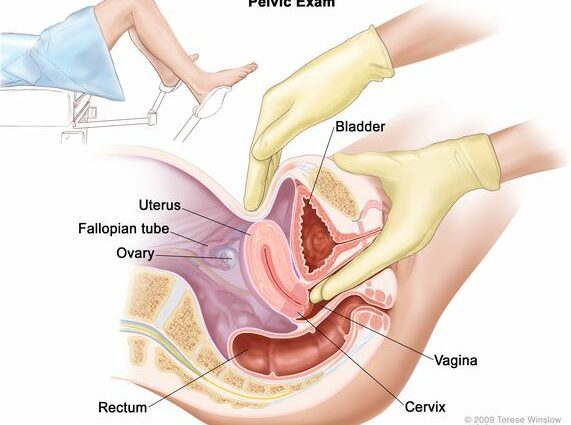Contents
How does a vaginal examination work in practice?
Long before the wave of #Metoo and #Payetonuterus, we were all used to the vaginal examination, performed at each annual visit to the gynecologist. But let’s say it as it is: vaginal touching is an invasive act, which concerns a very particular part of the body. As such, the practitioner, whether a midwife or a gynecologist examining you must always obtain your consent before performing vaginal examination. During pregnancy, some practitioners have regular vaginal examinations to examine the patient. Others not at all, until childbirth.
In practice, you are installed lying on your back on an examination table, your thighs bent and your feet resting on the stirrups. The doctor or midwife, after putting on a sterile and lubricated finger cot, introduces two fingers inside the vagina. It is important to relax, because if the muscles are tight, the examination is a bit unpleasant. The practitioner will be able to assess the position of the cervix, its opening, its consistency, its length, and check the vaginal walls. Then, while feeling your abdomen with the other hand, he will feel the uterus, check its volume and assess whether the ovaries are normal.
Is vaginal examination painful?
Vaginal examination is (and should be!) Practiced gently. It is not particularly pleasant, but it MUST NOT be painful. If during the examination you feel pain, it is sometimes a sign of an infection or a complication which will then require further examinations. Immediately notify the person who is examining you.
What is the use of vaginal examination during pregnancy?
The first visit to the gynecologist allows you to check that you are pregnant. Outside of pregnancy, you cannot feel the uterus during vaginal examination. There, the doctor perceives it very well: it is soft in consistency and its volume has increased. Most of the time, vaginal examination is performed almost at every prenatal visit. Almost, because if vaginal examination was a tradition in pregnancy monitoring, it is no longer recommended to do it systematically at each consultation. The High Authority of Health recommends it especially in the future mothers at risk of premature childbirth. The doctor will therefore question the pregnant woman to find out whether a threat exists. On palpation, the stomach may be hard, indicating uterine contractions that it does not necessarily perceive. The mother-to-be may experience lower back pain or have had a small infection. She may also have given birth prematurely in previous pregnancies. All of these signs require careful examination for changes in the cervix. Normally, it has two openings (internal and external) well closed, and a length of about 3,5 cm. Its shortening (we speak of erasure) or its opening require rest, or even treatment, in order to avoid a premature birth. As the touch is not very precise, it is increasingly associated with a more efficient examination: the ultrasound of the cervix.
What is the use of vaginal examination near childbirth?
The vaginal examination will look for signs of ripening of the cervix which usually indicate that the delivery is preparing. It allows you to check how high the fetal presentation (head or seat) is in relation to the pelvis. He can also detect the presence of the mucous plug. This mucus is located between the two openings of the cervix. When it opens, the mucus is evacuated. Last check: the presence of the lower segment. This area between the body and the cervix appears at the end of pregnancy. If the doctor perceives it to be thin and tight around the baby’s head, it is one more point for an imminent delivery.
What is the use of vaginal examination during labor?
On D-Day, you will hardly escape it, because it is (almost) essential to keep up with the smooth running of the work. But it all depends on the midwives and whether the labor is progressing quickly. In most maternity hospitals, on average, you will be seen every hour. The midwife will note the progress of the dilation of the cervix, its position and its length. The type of presentation (head, seat) and the position of the baby in the maternal pelvis will also be required. This in fact conditions the delivery route, because some presentations are incompatible with birth by natural routes. So don’t be surprised if the exam is a bit long! When the water bag needs to be pierced, this is also done during a vaginal examination, using a small forceps introduced into the opening of the cervix to the amniotic membranes. But rest assured, this gesture is not painful. On the other hand, it must be done with care to prevent too much liquid from draining too quickly.
Are there any contraindications to vaginal examination?
Some situations involve limiting or not touching the vagina. This is the case if the mother loses water prematurely. Indeed, repeated touches increase the risk of a maternal-fetal infection. They should therefore be practiced with caution. If the placenta is placed too low near the cervix (placenta previa), bleeding may occur, vaginal examination is contraindicated as it may worsen the bleeding.
Editor’s note: If you are not comfortable with this gesture and you do not want to have a vaginal examination, talk to the team before your delivery. No act should be done without your consent. It’s the law.










